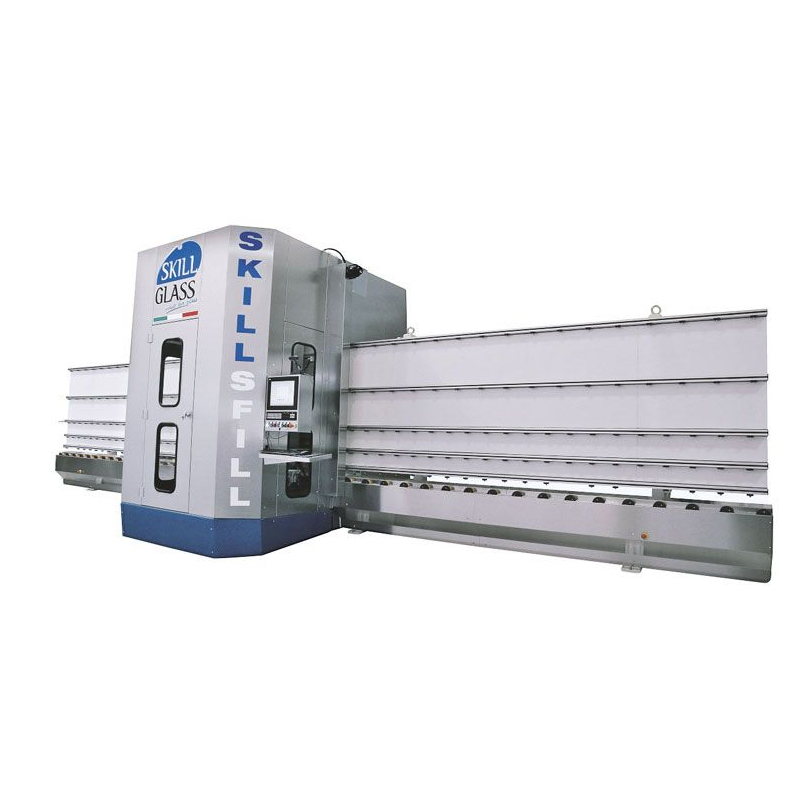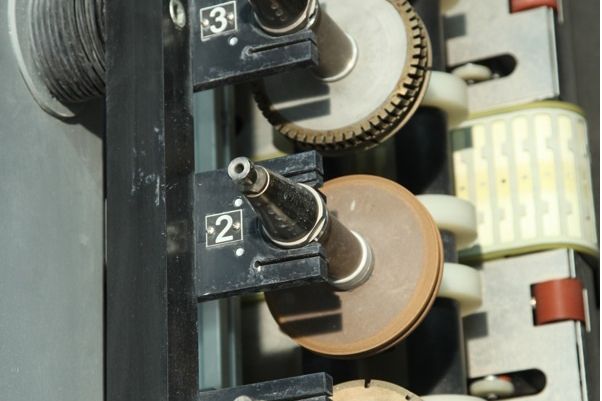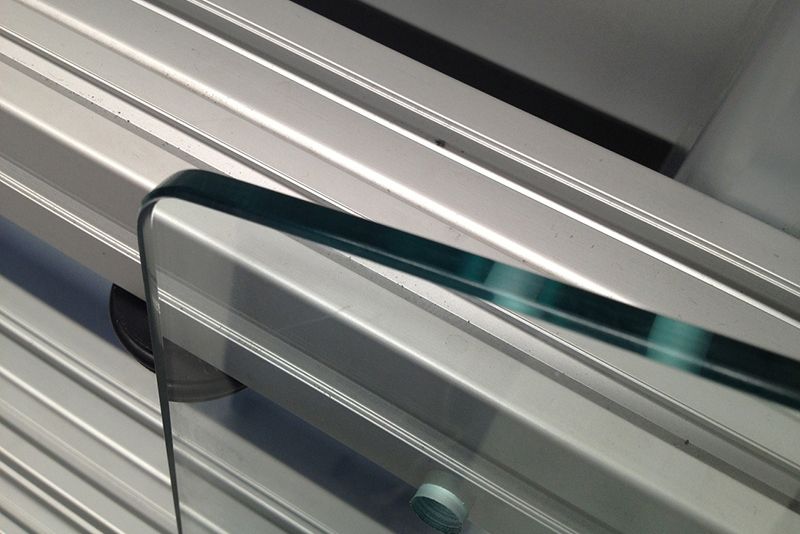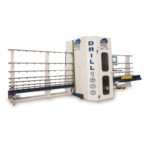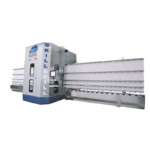
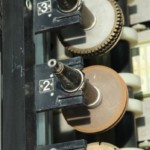
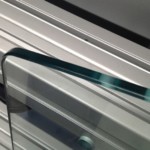
SKILL SFILL – Vertical Grinding Machine
9-AXIS AUTOMATIC VERTICAL GRINDING AND ARISSING MACHINE FOR THE GRINDING AND ARISSING OF FLAT OR SHAPED SHEET GLASS
SKILL SFILL is a 9-axis, numerical control vertical grinding and arissing machine for the automatic arissing, grinding and polishing of flat or shaped sheet glass (shaped only on 3 sides) with a thickness of 4 – 20 mm.
The machine is composed of nine axes and two electrospindles mounted side by side. One electrospindle works on the underside of the flat base of the glass while the other follows the profile of the shaped glass according to the shape pre-programmed into the numerical control.
SKILL SFILL has an entrance support, a central body and an exit support. The central unit supports two electrospindles of 10 kW with a speed of 0 to 12,000 mounted on ball bearing guides which can move vertically or horizontally in order to carry out any process via numerical control and interpolated with Vacuum-operated belts.
Each electrospindle has an eight-position automatic tool rotation system.
- Downloads/Info
- Videos
- Advantages
- Processes
- Software
- Other
- Spec
Description
Videos
Advantages
The vertical processing of sheet glass has many advantages in comparison with flat processing. The size of the machine is considerably less than a corresponding flat machine and the position of the sheet glass on the roller automatically obtains the fixed zero point without error to the extent that the stroke is certain. Furthermore, horizontal machines must be perfectly even to avoid breaking the glass whereas with vertical machines, the position of the glass is naturally aligned since it is supported from underneath.
Processes
The machine can carry out multiple processes:
GRINDING: this process is carried out using diamond grinders with a diameter of 150 mm on flat or shaped glass, even if layered or treated.
POLISHING: it can be carried out on large surfaces with 150 mm diameter grinders.
Software
The machine is managed with state of the art numerical control and uses Windows XP Professional Operating System. It is simple to use, even for beginners.
The program allows the user to control all parameters and settings as well as data regarding the tools.
The pressure of the polishing grinders is set using numerical control according to the parameters set previously so that the glass is optimally polished and finished.
A series of designs and pre-programmed processes can be inserted simply and securely into the numerical control using special software functions.
Skillglass Cad-Cam also comes with the machine and allows the operator to create any shape and design, even by importing .DXF files, to then be created by the machine. The program is parametric and is easy to use even for beginners thanks to pre-programmed shapes, which can be designed simply and quickly optimising time and the manufacture process.
Other
Automatic lubricationAutomatic lubrication
The automatic lubrication system is composed of numerous lubrication points situated in the areas of most movement. A central pump regulates the continuous flow of lubrication fluid.
The constant lubrication of all moving components such as bearings, recirculating ball screws and areas of linear movement is very important to prevent malfunctions and blockages and to reduce recurring maintenance costs. The central unit reaches the lubrication points of the main line according to the quantity and frequency programmed by the operator. The entire system is controlled by the PLC and is therefore managed completely automatically.
The automatic lubrication system is composed of numerous lubrication points situated in the areas of most movement. A central pump regulates the continuous flow of lubrication fluid.
The constant lubrication of all moving components such as bearings, recirculating ball screws and areas of linear movement is very important to prevent malfunctions and blockages and to reduce recurring maintenance costs. The central unit reaches the lubrication points of the main line according to the quantity and frequency programmed by the operator. The entire system is controlled by the PLC and is therefore managed completely automatically.
Low-e glass processing
The processing system for low-emissivity glass (LOW-E) is a central pressure system composed of a series of rollers that, in comparison with the standard version, are made of special silicone rings and an air system of special stainless steel blowers which substitute the entrance and exit brushes in the central body of the machine.
With these new appliances the machine can process all types of glass, including extremely delicate low-emissivity glass (LOW-E).
Automatic sheet glass scanning
Flat glass can be scanned automatically thanks to a mechanical sensor that scans the height of the sheet glass and two high-quality laser sensors that scan the thickness and the length.
This option increases ease and speed. There is no need for the operator to program the system to process rectangular glass, even of different dimensions.
The operator must simply load and unload the sheet glass. By automatically scanning the dimensions of the glass, the appropriate tool is selected from the tool store-rack according to the thickness of the glass.
Spec
| Machine dimensions with rollers | length 14250 mm x width 2630 mm x height 5000 mm |
| Min. size of glass worked | 600 x 300 mm |
| Max. size of glass worked | 6000 x 3210 mm |
| Min. thickness of glass worked | 4 mm |
| Max. thickness of glass worked | 20 mm |
| Height of work level | 620 mm |
| Forward work speed | 0-15 m/min. approx. |
| Cross traverse – Y axis | 3210 mm |
| Longitudinal traverse – X axis | 6000 mm |
| Electrical power supply (standard) | 400 V 50 Hz 3 phase |
| Total installed power of machine systems | 30 kW |
| Rated power of spindle. N° 2 of: | 10 kW (13,6 HP) each |
| Spindle speed with internal cooling of the tool | 0 – 12.000 r.p.m. |
| Numeric Control NC 1600 | 9 axis |
| N. of automatic change tool slots | 10×2 |

